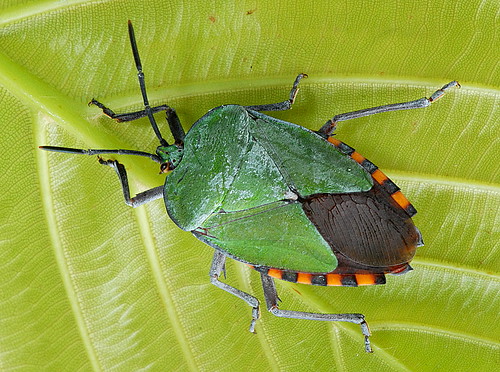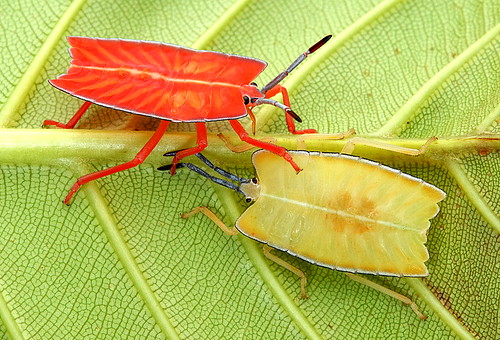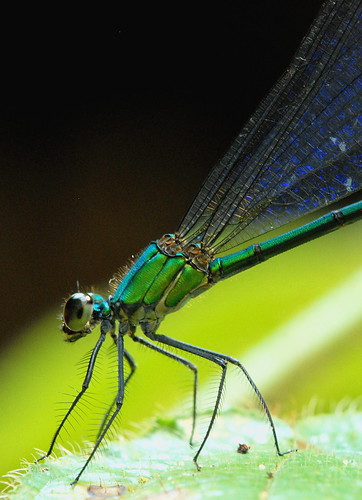Few weeks ago (31 May 2008), I went to Eco-lake at Singapore Botanic Garden to have a macro outing with my photographic friends. The macro subjects there were not so many and not so favorable for macro shooting. So many of my friends decided to move to Holland Woods for a better luck. However, shortly after they left, myself, together with Michael, Tony, Darren and Margret were all amazed by these groups of stinkbugs, both adults and nymphs. The nymphs were exactly the some body shape, but surprisingly with totally different colour forms, i.e. red, yellow and green! We assume that all should be belonging to the same species as there were only one species of adult Stinkbug (Pycanum sp) could be found on the spot. The red color form is quite common, but the other two are all new to us. Just wondering are there any more colour forms out in the field and are there any adaptation significance for having such diverse colour forms for the nymphs? This discovery again reminds us that we know so little about the little creatures right at our backyard....
I have posted these photos in my Flickr account and many of my Flickr friends like these nymph photos very much. Some of them described these nymphs look like a piece of cutting fruit, and I do agree with that. They look so different from the adult and are really really cute. I like particularly the two showing the interaction between the yellow and the red nymphs very much...simply they look so lovely and so interesting!! :)
1. The adult: FL 180mm, 1/10sec-F/18, ISO 640, MLU, Manual, EC: -0.3 ev, Tripod, fill flash at -1.67.
2. Get in Touch: FL 180mm, 1/25sec-F/22, ISO 400, MLU, Manual, EC: +1.0 ev, Tripod, fill flash at -1.67.

3. Red and Yellow Nymphs: FL 180mm, 1/50sec-F/16, ISO 400, MLU, Manual, Tripod, fill flash at -1.67.

4. Green Nymph of Pycanum sp, dorsal view: FL 180mm, 1/30sec-F/22, ISO 400, MLU, Manual, Tripod, fill flash at -1.67.
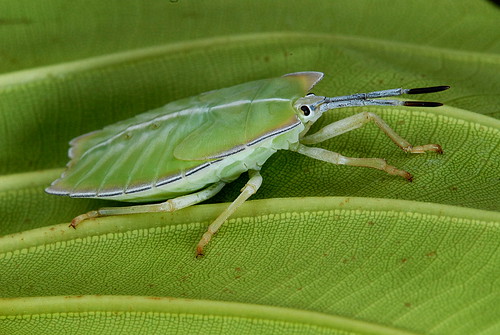
5. Green Nymph of Pycanum sp, lateral view: FL 180mm, 1/30sec-F/22, ISO 400, MLU, Manual, Tripod, fill flash at -1.67.
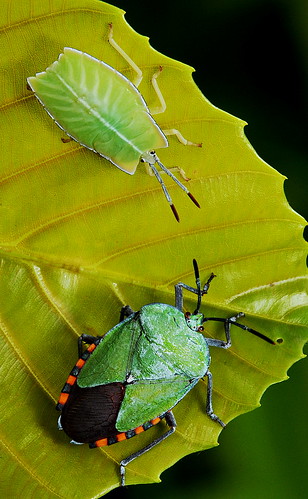
6. Mother and child: FL 180mm, 1/15sec-F/22, ISO 400, MLU, Manual, Tripod, fill flash at -1.67.
